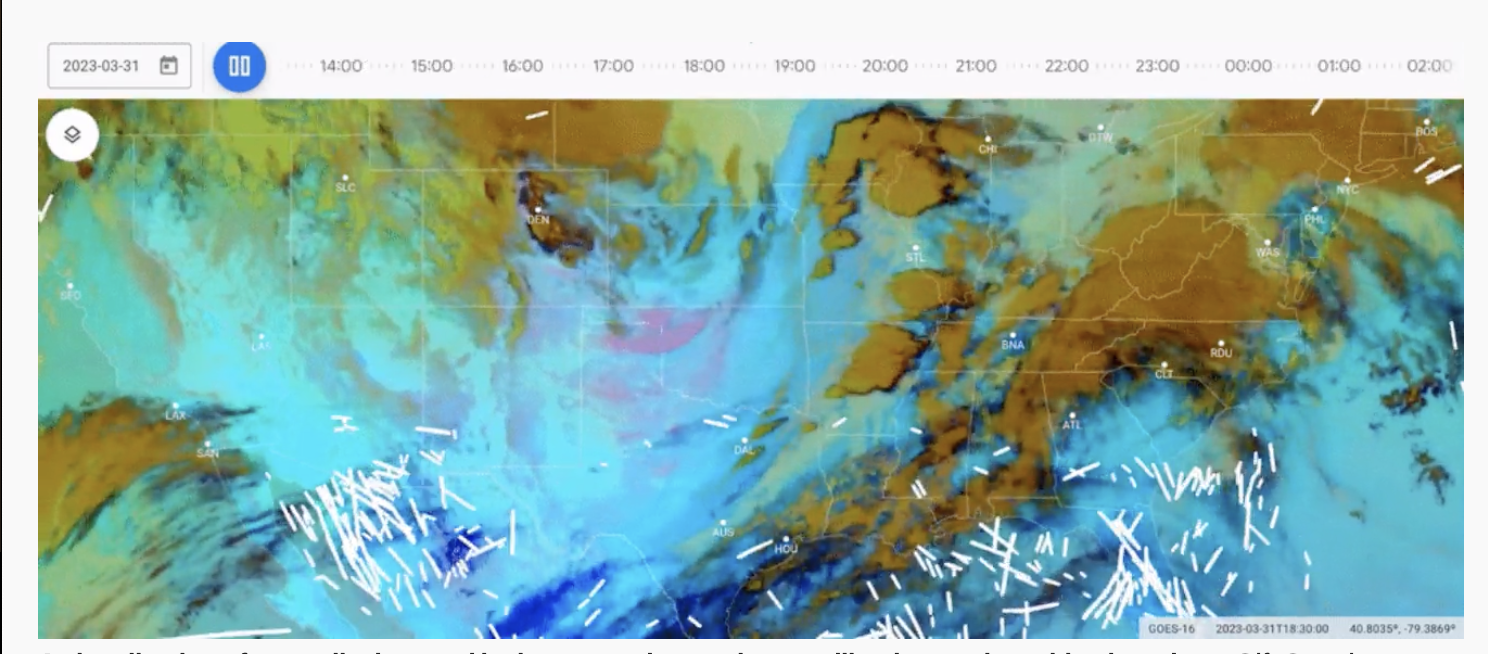AI-Powered Contrail Avoidance Could Help Decrease Aviation’s Climate Impact
September 15, 2023Sustainability and environmental consciousness are becoming increasingly important for companies hoping to avoid government scrutiny and consumer pushback. Aviation, which is responsible for as much as 3.5% of climate change according to a recent study from the National Oceanic and Atmospheric Administration, is at the forefront of this issue.
With intense scrutiny facing the industry, recent findings from a first-of-its-kind study have the potential to rewrite the narrative of aviation’s impact on our planet. The groundbreaking study, conducted by American Airlines in partnership with Google Research and Breakthrough Energy, explores the intriguing potential of contrail avoidance as a strategy to reduce the environmental footprint of air travel.
Dispelling Contrails
Condensation trails, or contrails, are the white streaks often seen trailing behind aircraft in the sky. These seemingly innocuous lines hold a significant secret: they are not mere wisps of natural clouds but rather artificial clouds created by the condensation of aircraft exhaust around tiny airborne particles. While contrails may appear temporary and inconsequential, they possess the power to trap heat in Earth's atmosphere. Research estimates that contrails are responsible for more than 35% of aviation's contribution to global warming, underscoring their ecological importance.
A Pioneering Study
The collaborative study investigated if contrails could be avoided by identifying areas where they’re likely to form. In their study, the researchers aimed to identify atmospheric zones with a high likelihood of contrail formation and evaluate whether pilots could use this data to alter flight paths as a means of minimizing contrail production.
To achieve these goals, the researchers first developed AI-driven contrail forecast maps by blending artificial intelligence, satellite imagery, weather data, and historical flight information. These maps predicted areas where contrail formation was most probable, offering pilots valuable guidance that could inform any alterations to flight paths.
Then, over the span of six months, American Airlines conducted 70 test flights. During these flights, pilots used AI predictions to make small adjustments to their routes, with the aim of avoiding contrail formation.
Encouraging Results
The results of the study demonstrate contrail avoidance’s potential for impact. When pilots used AI predictions to adjust their flight paths, there was a 54% reduction in contrail formation compared to flights that followed the originally planned path. This supports the potential for commercial flights to deliberately avoid creating contrails.
However, altering flight paths to avoid contrails may lead to longer routes and potentially increased fuel consumption and emissions. Further studies are needed to determine if these alterations offset any benefits gained through contrail avoidance.
Further, as this was only an initial, small-scale study, it remains to be seen if these findings can be effectively scaled and operationalized across the entire aviation industry. Cooperation and coordination among airlines, regulatory bodies, and technology providers presents a tremendous hurdle and will be vital to any plan’s success.
Notably, the study suggests that creating an independent organization dedicated to collecting and further studying contrail data could prove pivotal in reinforcing these initial findings, advancing contrail avoidance strategies, and supporting policy changes.
The Future of Sustainable Aviation
American Airlines is actively pursuing strategies to achieve net-zero greenhouse gas emissions by 2050, with a focus on deploying more fuel-efficient aircraft and embracing low-carbon fuels. This contrail avoidance study aligns with their vision of a greener, more eco-conscious aviation industry, and it could be an example for other companies to follow.
The collaborative efforts of American Airlines, Google Research, and Breakthrough Energy have opened a new chapter in aviation's quest for sustainability. Contrail avoidance may hold the key to significantly reducing aviation's environmental impact by deploying a tangible, impactful strategy that could reshape the skies for generations to come.
Capitol Technology University’s programs in Aviation and Astronautical Sciences can prepare you to create a more sustainable aviation industry. For more information, visit the aviation program page or contact our Admissions team at admissions@captechu.edu.




